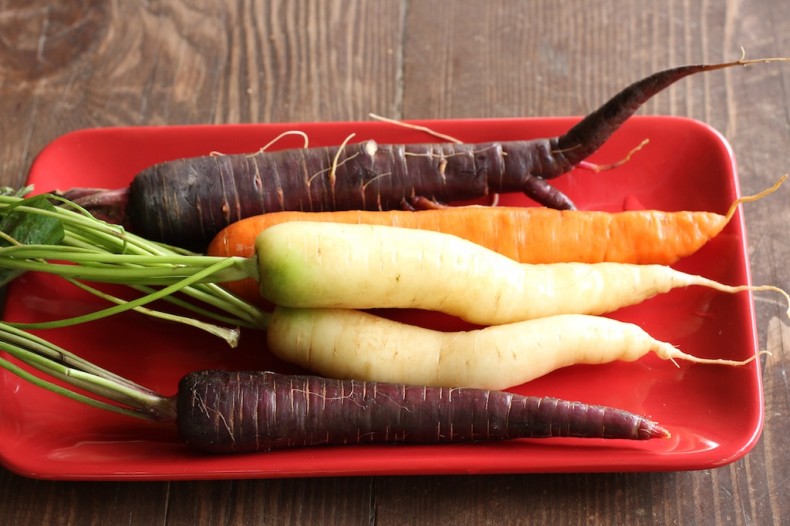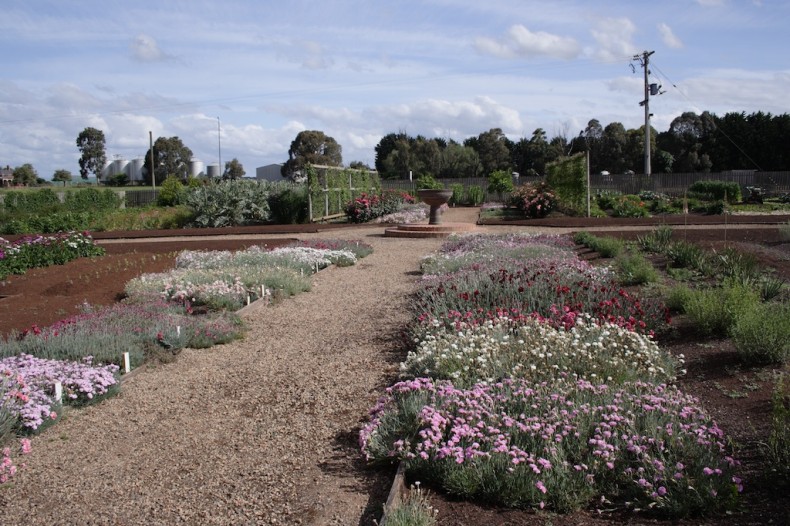Article and photos by Penny Woodward

Purple Dragon carrots with white and orange carrots
The next few months are the perfect time to plant carrots of any colour in any region, but why not try purple carrots for a change? Purple carrots (Daucus carota Sativus Group ‘Purple Dragon’) were probably grown by early Romans who also grew white carrots, but it is believed that the first purple carrots came from Afghanistan, Pakistan and northern Iran. Purple, white and yellow carrots were imported to southern Europe in the 14th century and were widely grown in Europe into the 17th Century. Our familiar orange carrots only appeared in 16th century Holland when patriotic Dutch growers used seed from purple carrots and yellow Turkish carrots to produce orange roots, reflecting the colour of the ruling House of Orange. Over the ensuing centuries, orange carrots came to dominate and carrots of other colours were only preserved by growers in remote regions of the world. Purple carrots are still grown in Afghanistan where they are used by tribesmen to produce a strong alcoholic beverage. Read more
 Everything you need to know to keep your garden thriving and beautiful throughout the year
Everything you need to know to keep your garden thriving and beautiful throughout the year
Review by Penny Woodward
Well known garden writer, editor and horticulturalist, Jennifer Stackhouse has written another useful book. Garden covers everything a new and modern gardener needs to know from watering, fertilisers, mulch, compost, pruning, weeding and other maintenance, as well as a calendar of tasks and a list of top plants. There are also instructions for outdoor living that covers pools, ponds, chairs, play equipment and more. Beautiful photographs by Adam Woodhams accompany the text. There is a chapter that looks at how to garden organically and covers all the main topics and my only criticism would be that there is not more of a focus on organics (but then I’m an organic gardener so I would say this!). I particularly like the chapter on troubleshooting which explains useful things like how to tell if a plant is dead or alive, how to protect plants from wind and hail damage, the good and bad effects of frost, and bushfire retardant plants. A great addition to my collection of well researched, easy to use Australian gardening books.
By Jennifer Stackhouse, ABC books published by Harper Collins Australia, 2013, $35
(The book was given to me by the publishers)
Article and photos by Penny Woodward

A carpet of dianthus at Lambley Nursery (photo courtesy of Lambley)
Gillyflowers, carnations, pinks, sweet Williams, picotees, selfs and fancies, all names with which to conjure. These old-fashioned Dianthus species are all in the Caryophyllaceae along with well-loved flowers like gypsophila, herbs like soapwort and weeds such as chickweed. Heirloom Dianthus species and their more recent cultivars have been grown for their beauty and used in cooking and perfumery for hundreds if not thousands of years. The earliest recorded is probably D. caryophyllus, once known as gillyflowers and today more usually called carnations. In the first century AD, Pliny wrote that the clove carnation was discovered in Spain in the days of Augustus Caesar. Some of the varieties around in the 1700s had names like Lustie Gallant, Ruffling Robin and Fayre Maid of Kent. Read more



